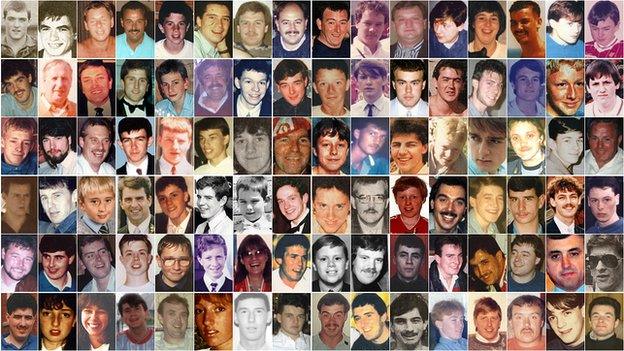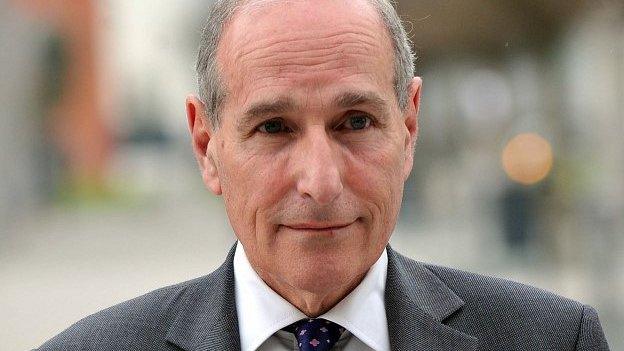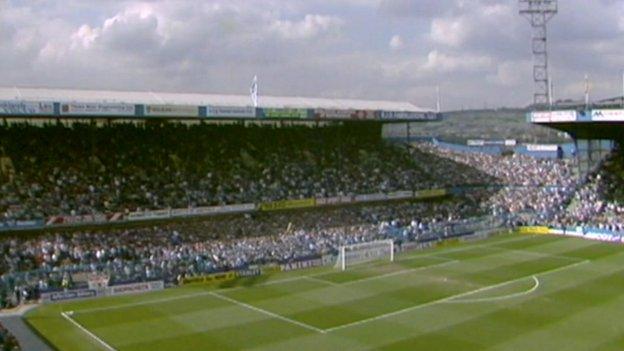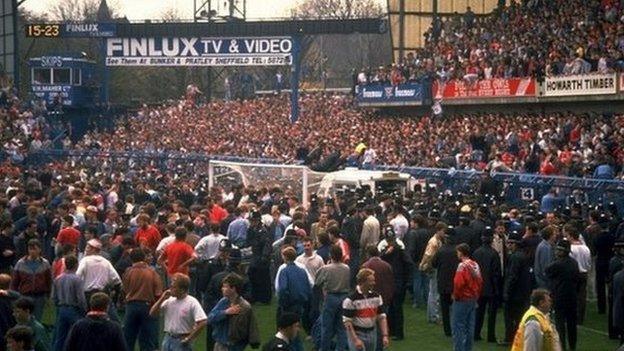Hillsborough inquests: Match chief 'missing from control box'
- Published

Firefighter Lawrence Fletcher said he thought command and control had 'broken down' at the game
The Hillsborough police match commander was not inside the stadium control box 25 minutes after the disaster halted the game, the inquests heard.
Firefighter Lawrence Fletcher stated two PCs inside the box did not know where Ch Supt David Duckenfield was and could not contact him.
Mr Fletcher said he could see a medical emergency unfolding on the pitch
Ninety-six Liverpool fans died following a crush on the terraces at the 1989 FA Cup semi-final.
Seven fire engines with 31 crew on board were initially sent to the stadium in Sheffield after fire control sent out an emergency call at 15:16 BST saying there was a "major incident", Mr Fletcher said.
The Sheffield-based station officer was one of the first firefighters to reach the pitch at 15:25 and instructed colleagues to prioritise casualties according to their need.
They used automatic respirators on fans with breathing difficulties and took some to a casualty clearing area which Mr Fletcher had set up nearby.
He said he did not see anyone who appeared to be co-ordinating the emergency response and did not speak to any senior police officers.
The jury heard how he spoke to a sergeant and a police inspector, who were on the pitch, to find out what was happening and to see how the emergency response was being organised.
He said: 'They just looked in shock. They didn't understand the situation in front of them.'
'Not in control'
The firefighter said he went to the police control box, which overlooked the terraces on which the crush happened, at about 15:30.
He told the jury he asked the two PCs inside: "What was happening, who was in charge, what was going on, was there any plan to do anything?"
The officers told him Ch Supt Duckenfield was in charge but they did not know where he was and were not able to contact him.
James Mehigan, a barrister representing a group of bereaved families, asked: "When you left the police control box, did you feel that the people in the control box had control of the stadium?"
Mr Fletcher replied: "No."
Mr Mehigan then asked: "What did you think of their command and control structures at that time?"
Mr Fletcher said: "I just thought it had broken down. For whatever reason something had gone wrong."

Who were the 96 victims?

BBC News: Profiles of all those who died

The jury also heard from Niall Wilson, a fourth-year medical student at the time of the disaster.
He began giving first aid to casualties at the back of the stadium after escaping from the crush in pen three of the Leppings Lane end.
Dr Wilson told the jury: "It struck me at the time and still does that it had been dealt with as a riot, rather than a medical emergency."
He said in a 1989 statement: "If people could have been organised quicker to assist the injured, it's possible that so many would not have died.
"There appeared to be a total breakdown in communication between the emergency services."
'Total chaos'
The statement added: "A lot of the injured were being tended by police officers who were unaware of basic first aid."
The jury heard the police were "acting simply as individuals" and "not in a co-ordinated fashion".
Dr Wilson told the jury: "I mean, the whole thing was totally disorganised. It was total chaos.
"There didn't obviously appear to be anyone in charge."
He also described how an ambulanceman brought an oxygen cylinder that "didn't have very much oxygen in it."
The inquests, being held in Warrington, Cheshire continue.
- Published23 February 2015

- Published13 February 2015

- Published12 February 2015

- Published11 February 2015
